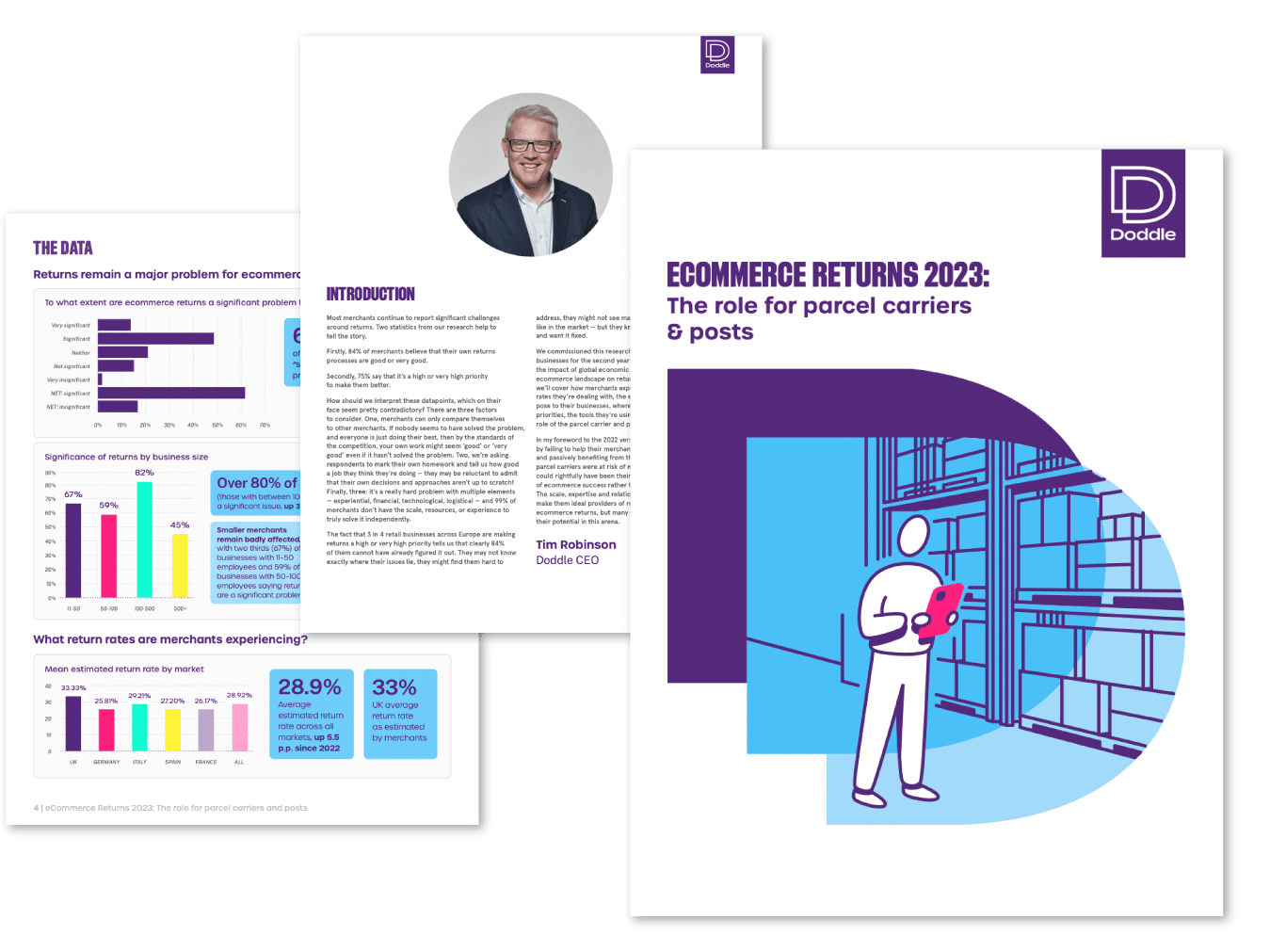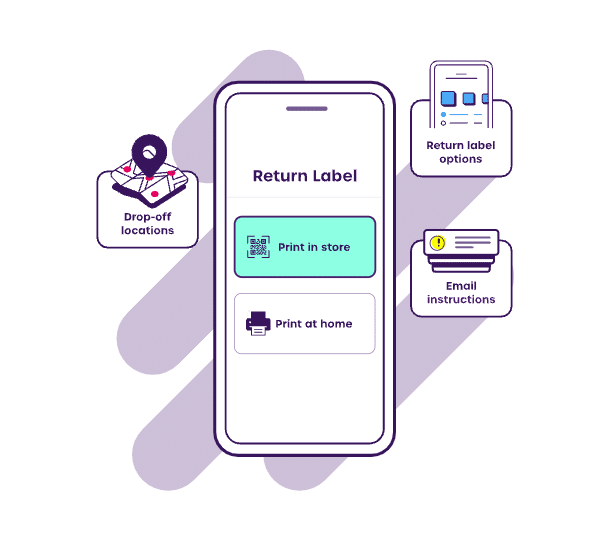Insight / Blog
Return fees or free returns: why not both?

Summary: Debates between return fees or free returns miss the bigger picture: how to address the root issues of returns.
To cope with rising return rates and shrinking costs, many retailers, including Abercrombie & Fitch, Kohl’s, Dillard’s, J.C. Penney, and others, have opted to follow brands such as Zara and H&M and start charging for returns.
In 2023, the number of retailers charging for returns rose by 31% to 40% in the US. Our data shows that 53% of merchants charge for returns, while in the UK, there is nearly an even split of free vs paid returns, with 48% of retailers charging for returns. In the fashion industry this number rises significantly, as 79% of fashion retailers are now charging for returns.
While the debate between free returns versus charging fees for returns goes on, retailers risk missing the bigger picture. Simply charging for returns doesn’t address the root causes of return headaches: slow processing, high restocking costs, and frustrated customers.
On its own, introducing returns charges (or otherwise tightening returns policies) is a solution that addresses the symptoms of high returns costs without fixing the root cause. Most retailers are still stuck treating every return the same way, with partially digitised systems and unsophisticated processing, leaving value on the table by failing to get returns back in stock quickly, or wasting mileage and time transporting all items to the same locations rather than directing them to the most appropriate.
The rise of paid returns
It’s easy to understand the reasoning for implementing returns fees when retailers face rising costs from processing, shipping, and restocking returns – all while losing out on potential sales from inventory that cannot be resold. By implementing returns fees, retailers recover some of the cost of a return, and potentially discourage unnecessary purchases and expensive return-related behaviors, such as ordering the same item in different sizes to try on. There is plenty of financial upside to introducing fees for retailers.
However, paid returns might turn away potential new customers and decrease the lifetime value of existing customers. Offering free returns still works as a great incentive – perhaps even more so now as it has become a much rarer proposition. One study shows nearly 72% of US consumers have a greater loyalty to retailers that provide free returns. In addition, 88% of consumers also said they stopped shopping with a retailer because the retailer introduced a paid returns policy, and over half (54%) actively avoid retailers that charge to return items.

Returns don’t have to be an absolute
The biggest issue with looking at paid vs free return approaches is that paid returns fails to address the root causes of the problem – returns are not equal. Customers are unique, and uniquely valuable. Different products need different outcomes when returned in different conditions, or from different locations. That means a blanket policy on returns fees will be right for some customers, some of the time, but wrong for many customers and returns.
For example: a small percentage of fraudulent or careless returners can disproportionately inflate costs. For example, global retailer ASOS attributes £100m of loss to just 6% of customers with high return rates, and ASOS’s actual loss over the reported period was only £60m!If ASOS sought to fix this returns problem by introducing flat fees on every return, it would recover significant costs, but it would be an overstep for 94% of customers.
Instead, it is now targeting returns fees based on the time taken to make the return. Returns inside of 14 days are free, but customers pay for returns made later than that. That’s still a fairly basic approach, but it’s much more effective than a blanket policy, and incentivizes ideal returns behavior – get the product back quickly, so it’s more likely to resell for full price.
Solving the returns crisis isn’t about deciding between free or paid returns. It’s about controlling costs and putting more intelligence in place to recover costs for the most inefficient cases, without negatively impacting the vast majority of shoppers. To achieve this, retailers need returns solutions that connect customer and order data to the returns process, and allowing them to create customized rules that control their unprofitable edge cases and reduce returns costs.
The time for better returns is now
Our data reveals that 63% of merchants say that returns are a significant or very significant problem for their business, up from 57% the previous year. In addition, 67% of merchants also state that return rates have increased in the last year. There’s no better time than now for retailers to implement smart return solutions that boost customer satisfaction, improve cost savings, and speed up inventory turnaround for increased revenue.

Topics:
Related articles
Important lessons from Leaders in Logistics 2024
Leaders in Logistics 24 dived into AI & automation, sustainability, changing ecommerce behaviours, emerging consumer expectations & predicted what the next decade had in store.
Postal results, reforms, and returns
Posts around the world are seeking reform, but how can they drive improved results in the short term?
5 Changes We Predict in eCommerce Delivery & Returns in 2024
Our predictions for 2024 in ecommerce delivery and returns, plus a roundup of our 2023 predictions.













